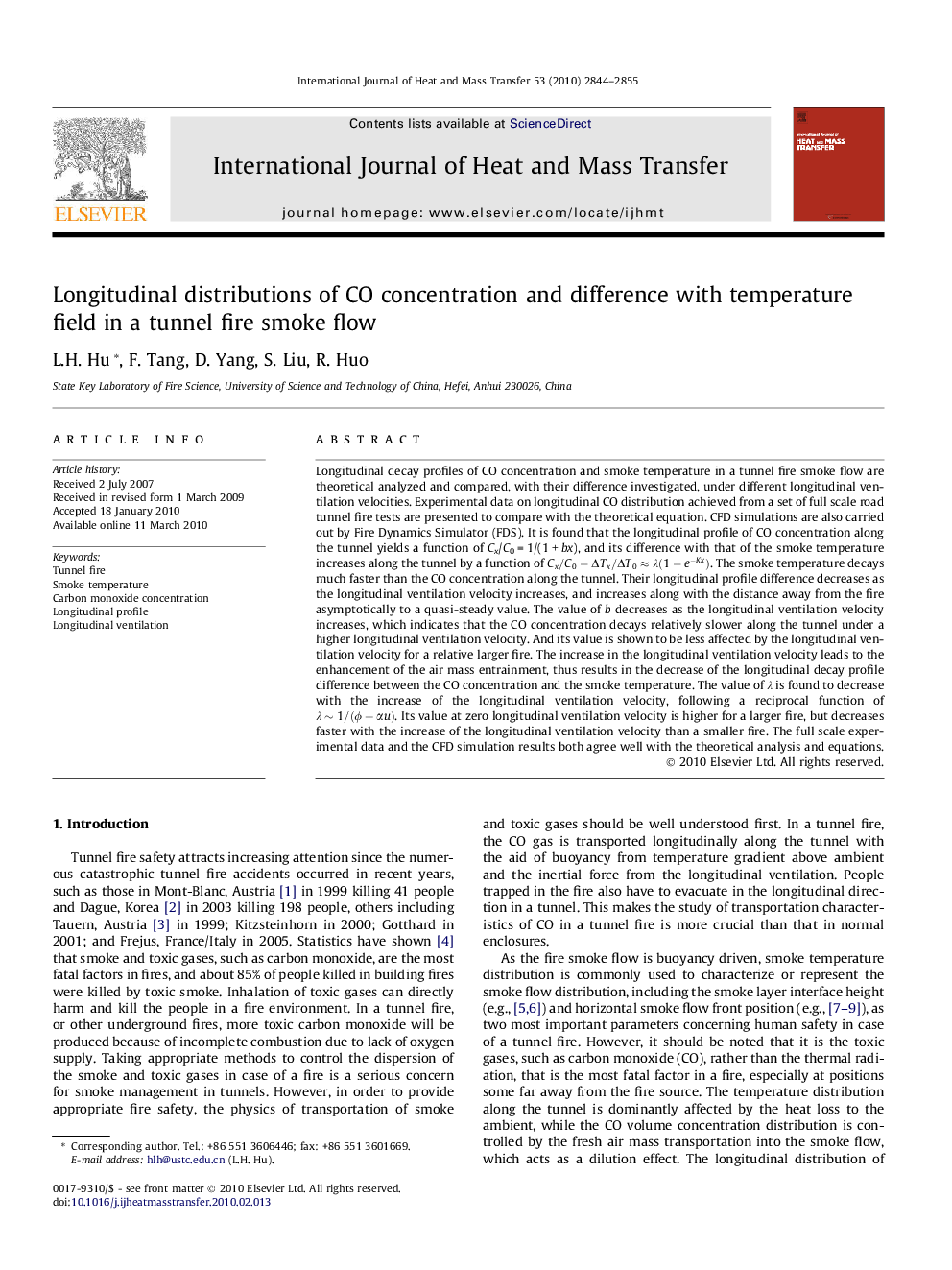| کد مقاله | کد نشریه | سال انتشار | مقاله انگلیسی | نسخه تمام متن |
|---|---|---|---|---|
| 661056 | 1458120 | 2010 | 12 صفحه PDF | دانلود رایگان |

Longitudinal decay profiles of CO concentration and smoke temperature in a tunnel fire smoke flow are theoretical analyzed and compared, with their difference investigated, under different longitudinal ventilation velocities. Experimental data on longitudinal CO distribution achieved from a set of full scale road tunnel fire tests are presented to compare with the theoretical equation. CFD simulations are also carried out by Fire Dynamics Simulator (FDS). It is found that the longitudinal profile of CO concentration along the tunnel yields a function of Cx/C0 = 1/(1 + bx ), and its difference with that of the smoke temperature increases along the tunnel by a function of Cx/C0-ΔTx/ΔT0≈λ(1-e-Kx)Cx/C0-ΔTx/ΔT0≈λ(1-e-Kx). The smoke temperature decays much faster than the CO concentration along the tunnel. Their longitudinal profile difference decreases as the longitudinal ventilation velocity increases, and increases along with the distance away from the fire asymptotically to a quasi-steady value. The value of b decreases as the longitudinal ventilation velocity increases, which indicates that the CO concentration decays relatively slower along the tunnel under a higher longitudinal ventilation velocity. And its value is shown to be less affected by the longitudinal ventilation velocity for a relative larger fire. The increase in the longitudinal ventilation velocity leads to the enhancement of the air mass entrainment, thus results in the decrease of the longitudinal decay profile difference between the CO concentration and the smoke temperature. The value of λ is found to decrease with the increase of the longitudinal ventilation velocity, following a reciprocal function of λ∼1/(ϕ+αu)λ∼1/(ϕ+αu). Its value at zero longitudinal ventilation velocity is higher for a larger fire, but decreases faster with the increase of the longitudinal ventilation velocity than a smaller fire. The full scale experimental data and the CFD simulation results both agree well with the theoretical analysis and equations.
Journal: International Journal of Heat and Mass Transfer - Volume 53, Issues 13–14, June 2010, Pages 2844–2855